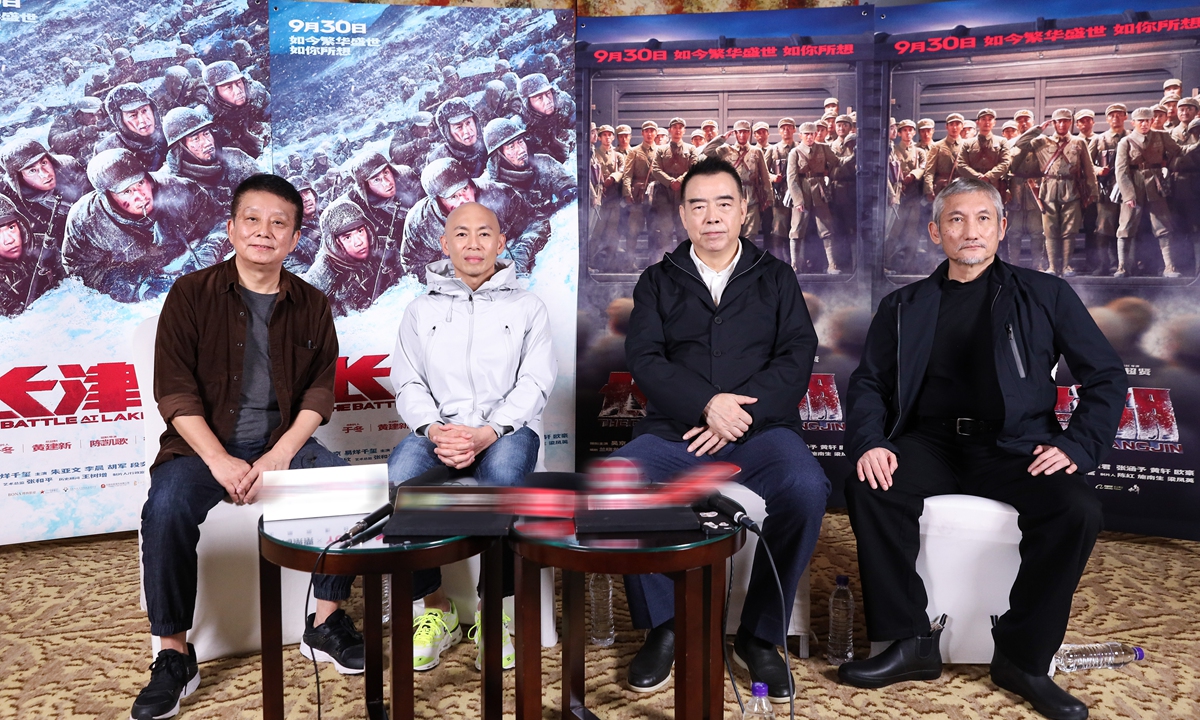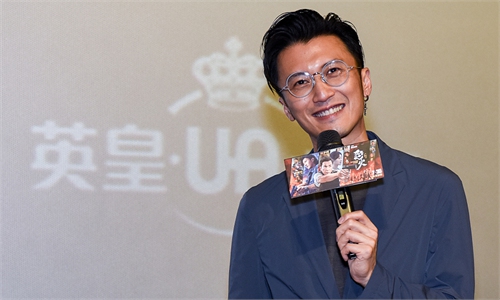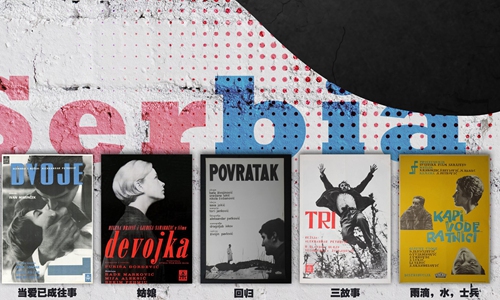ARTS / FILM
Chinese directors recall unforgettable experiences of filming ‘The Battle at Lake Changjin’
Rising to the challenge

From left: Huang Jianxin, Lam Chiu-Yin, Chen Kaige and Tsui Hark Photo: Courtesy of Bona Film
The Chinese-made historical war epic The Battle at Lake Changjin, which focuses on a major battle in the War to Resist US Aggression and Aid Korea (1950-53), will debut in Chinese theaters on Thursday. The film is expected to be China's highest grossing film of the year.As the most expensive film in Chinese film history with a budget of over 1.3 billion yuan ($201 million), the film was filmed through the joint effort of four Chinese heavyweight filmmakers, directors Chen Kaige (Farewell My Concubine), Lam Chiu-Yin (Operation Red Sea) and Tsui Hark (The Taking of Tiger Mountain) and executive producer Huang Jianxin (The Founding of a Republic).
Seeking answers
As the two directors from Hong Kong, Lam and Tsui pointed out that as Chinese, they needed to understand why "we fought this war and how we won."
"We put a lot of shots of the US military in the film because this was a battle between China and the US. The US military is not an abstract symbol, but the army of a country. After World War II, the US military was very strong, making them believe they could control the world situation. However, when the war began, they did not expect that the power of China would be so great, and that Chinese power was what they had to learn. In order to maintain the authenticity of the war, we needed to feature the US military's response," Tsui told the Global Times.
According to Tsui, the war is a very sensitive subject in US history. They call it "a forgotten war," not because they want to forget it, but because there are so many things in this war that they didn't mention again. But on the 70th anniversary of this war, they carried out a lot of studies in many military academies and universities to discuss why they failed.
"I have seen historical materials written by an American saying that on the eastern front of the war, Chinese soldiers swarmed like ants - one fell down and another came up again. At last, the US army was frightened: They were all trembling because of our soldiers…We used our lives to drive these invaders out," Huang told the Global Times.
According to Huang, The Battle at Lake Changjin depicts the battlefield on the eastern front of the war. It was the most difficult battle, and an important turning point, and it was also a battle in which China sacrificed the most of its soldiers in the war.
Though The Battle at Lake Changjin takes place in North Korea, the film does not show any North Korean military or residents, which the directors explained by saying that the battlefield at Langlin Mountain was a no man's land.
"The Changjin Lake battlefield was basically empty, so it wouldn't be realistic if North Korean soldiers and civilians appeared in the film," Chen explained.
The three directors read countless historical materials to prepare for the film, the accounts of the war therein often moved them to tears. The equipment China had was far behind that of the US side. Many Chinese soldiers were still holding weapons captured from the Japanese army in the War of Resistance against Japanese Aggression (1931-45), while the US military was heavily armed with artillery and tanks.
"Why did we have to fight this battle in such an unequal situation? Just as Chairman Mao said 'Strike one punch to avoid a hundred punches.' It was for the safety of our children and grandchildren, and this is the spirit of our Chinese army and what we want to say," said Huang.
Difficult conditions
The COVID-19 pandemic posed a big challenge for the production team.
According to Huang, they established anti-pandemic groups.
"We were required to take a nucleic acid test every three days, and so you can imagine how many tests had to be carried out for the 7,000 crew," Huang said.
"The difficulty this time was that our crew was very large, and the things we needed were beyond imagination," Lam said, adding that the weather, chilling coldness, was their enemy.
"I usually could take more than 50 shots a day, but I was not able to take 20 shots a night [in that weather]. Also, everyone was dealing with the epidemic. For example, for those foreign actors playing the US military, we needed to find them across China rather than from overseas. Staying on schedule was very hard for us," Lam recalled.
Chen said that the three directors shot far more footage than what appears in the film, and so they are considering a director's cut in the future.
The film has a huge budget and Huang noted that most of that went to the equipment in order to be able to recreate the war. Everything (including 80 US tanks) had to be recreated since they did not have ready-made US tanks. One tank cost serval million yuan.
"I have made movies for a lifetime, but the scheduling of so many tanks in the three-director groups was completely beyond my experience. This movie could not have been completed without collaborations," said Huang.




